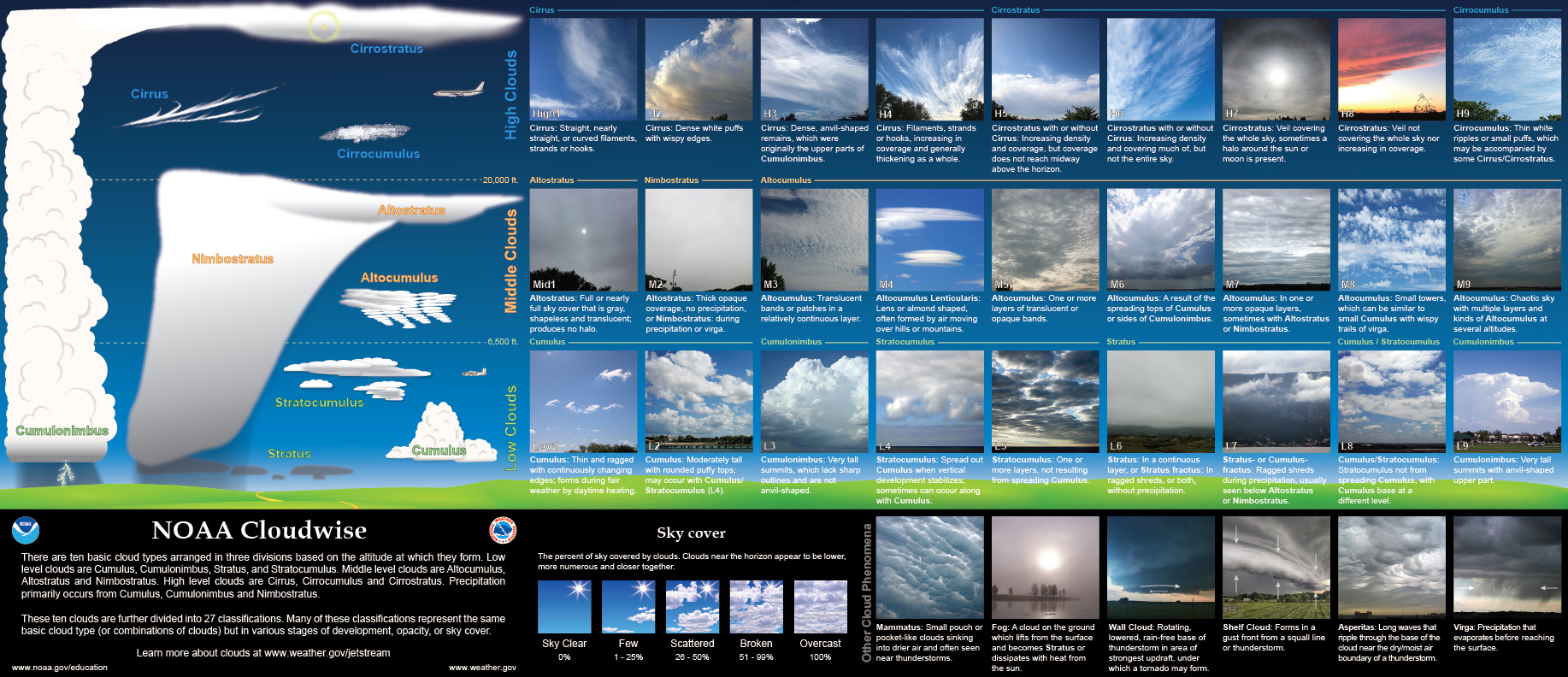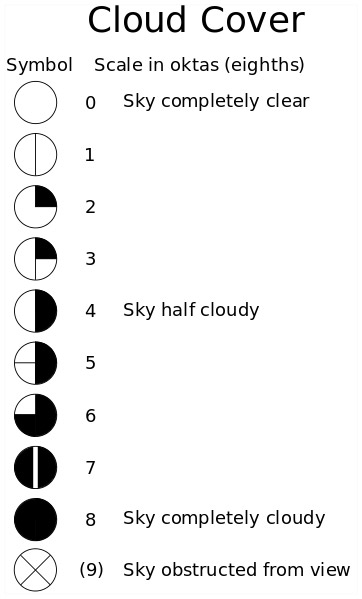Moisture Impacts on Flight
Changes in the moisture content, pressure and temperature of the atmosphere change the density of the air. These changes in air density can impact engine performance the plane’s ability to maintain lift. Here are some other effects of moisture on an airplane's flight.
Clouds are often indicators of future weather conditions. Cloud types are determined by its height, shape, and behavior:
- Low Clouds (stratus; less than 6,500 ft): primarily made of water droplets, can include supercooled water droplets that can freeze on contact with the airplane (called icing), clouds in this grouping can create low ceilings, hamper visibilities and change rapidly.
- Middle Clouds (alto; 6,500 to 20,000 ft): composed of water, supercooled water droplets, and ice crystals. Typically encountered on cross country trips at higher altitudes, clouds can produce turbulence and may cause icing.
- High Clouds (cirrus; above 20,000 ft): occur in stable air, made entirely of ice crystals and pose no real threat to aircraft.

Source: NOAA
Closely related to cloud cover and ceilings is visibility. Visibility refers to the greatest horizontal distance at which prominent objects can be seen with the normal eye.
Fog, precipitation, haze, smoke, dust and ash can obscure visibility making take offs and landings dangerous.
For Aviation purposes, a ceiling is the lowest layer of clouds reported as being broken or overcast that cover more than half the sky. If the sky is totally obscured, the height of the vertical visibility (VV) is used as the ceiling height. Knowing the ceiling is important because the aircraft needs to climb to a cruising altitude, which is out of the clouds and safely above the ground. Low ceilings can make for difficult approaches and require pilots to use special instruments to land. Cloud cover and ceiling heights are expressed in oktas. Broken to overcast skies are reported when ⅝ to 8/8 of the sky is obscured.

Source: Frasmacon via Wikimedia Commons
Dew occurs when moisture condenses out of the air and deposits itself on objects. Dew along poses no threat to aircraft unless the dew freezes and becomes frost, which inhibits lift.
Fog is a cloud that begins within 50 ft of the surface. It typically occurs when the temperature of the air near the ground cools to the dewpoint temperature. Fog can cause problems with ground visibility. (Sky Video of Fog from FSU WeatherSTEM on Feb 3, 2017)

Source: Fir0002 via Wikimedia Commons
